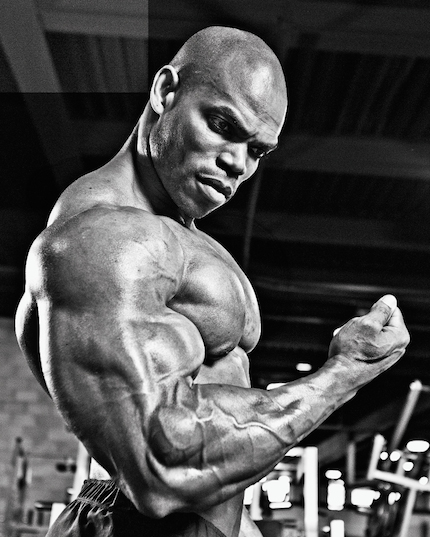The Romano Factor


Advanced Training Principles - Drop Sets
Drop sets are a principle in the advanced lifter’s arsenal of maximal muscle fibre recruitment tools. Although it may seem this concept would favor high intensity training (HIT), and it does, the concept can also be employed to satisfy the volume camp. It’s quite versatile, really. It is nevertheless, tailor-made for HIT training because it’s one of the best ways for you to find failure. I was discussing this very topic one day outside the front door of Gold’s Gym in Venice, with Mike “Mr. Heavy Duty” Mentzer.
We were sitting on the low wall of the parking lot, over to the right, in the shade of a struggling tree of some sort other than palm. If that little corner of the world could talk, it would be able to recant a litany of discussions between those who would become legends, from Mr. Olympias to National bodybuilding champions, pro wrestlers, drug dealers, pro ballers, schmoes, magazine photographers, to Joe Weider himself. It’s one of the truly hallowed corners of Mecca. Mike’s dabbling in philosophy, particularly that of Ayn Rand, gave him license to craft the most logical path to the desired end of any exercise—failure. Logically, Mike would contend, there are only two measures of output: zero and 100 percent. Now, in understanding that principle, zero is quite blatant, but 100 percent is a bit of a chore to quantify, especially if you’re on the business end of seated Nautilus biceps curls and Mentzer is deciding for you. It’s actually quite excruciating. With Mike in command, and employing a combination of forced reps, negatives, and drop sets, he would lead you to true failure, where your 100 percent output amounts to zero.
Arriving at the exact point where the muscle is momentarily unable to heed the brain’s command to contract requires some truly advanced training principles—not advanced in their manner of execution, but advanced in your ability to actually push yourself through it. That’s why one of the tools used to extract that 100 percent is the drop set.

The concept behind a drop set is really quite simple. Once you reach the point where your body is trying to tell you it’s putting out 100 percent, as in you can no longer complete a rep, you simply remove 30 to 50 percent of the resistance and thus drop the hitherto limit of your 100 percent effort down to where the muscle will again be able to complete a contraction, allowing you to continue doing reps, until you reach another point where your muscle is trying to tell you it’s reached the end. A simple removal of 30 to 50 percent more weight will prove the body wrong. And so on, until there’s no resistance left. If you can’t lift “nothing,” there’s a pretty good chance you’ve reached the desired end—failure.
Because of its quantifiable end—failure—drop sets are a perfect principle for the HIT crew, but what about for the volume guys? Because volume training requires we employ a good deal of ambiguity in how many work sets of a particular exercise we perform, drop sets can be employed to spread out the workload in such a way as to recruit as many muscle fibres as such exhaustive, multi-work set training will permit. In extreme volume training, however, it’s sometimes difficult to not succumb to fatigue before you accomplish your mission.
HIT dictates that if you can kill someone with one perfectly aimed bullet, with which cartridge in the clip will you kill him? The first or the last? HIT theorizes that you’d want to use the first shot, as in one actual work set to failure, so you can get out of the gym as quickly as you can and start recuperating, which is when you grow. The volume guys might use the fourth bullet, the sixth, or the tenth. There’s no way to know. Throwing in some grueling drop sets, even if you don’t go to failure, will have you deciding more specifically when it’s time to move on and perhaps save some valuable recuperation time.
Let’s say you’re going to do leg extensions and intend to do 8 sets of 10 to 15 reps, increasing the weight with each set. Pretty normal fare. While such a series of reps will certainly pump up your quads, during the last few sets, you’ll likely tire long before you’ve reached your true potential for that set. If you did five sets instead, with the last two being triple drop sets, you might last long enough to really put in the reps and recruit the maximum amount of muscle fibres. Working up to a weight where you can barely get 8 reps, then dropping the weight by 30 to 50 percent and shooting for 8 more reps, then another 30 to 50 percent for another 8 reps, is a great scheme for the volume guys.

Drop sets also allow those going at it alone to get the similar benefits of forced reps without a training partner. This works particularly well with selectorized machines where you simply stick a pin in a weight stack to determine the resistance. Dropping the weight is easy in this case. You can also line up two or three pairs of dumbbells on either side or in front of a bench for easy access during a drop set. In desperate cases, you can load up a bar with your drops pre-loaded. Put on, say, a ten and a five instead of a ten and a five. This will allow you to do 15-pound drops on each side by just yanking off the two odd pairs of plates; pull the ten and the five comes with it.
I say “desperate” in the case above because it’s only to be done if you’re going at it alone. This is clearly a job for as many as three people, depending on the lift, if you include a separate spotter. Yanking plates off each side of a bar by yourself is going to require you to get up off the bench and visit both sides of the bar. Time is of the essence in a drop set. Even if you get up, rebound off each side of the bar, and get back on the bench faster than Speedy Gonzalez could, every second you stop moving the weight is a second spent in the duration of the set not recruiting muscle fibres and allowing your strength to return. You want the drop to be as seamless and quick as a Ferrari F1 paddle shift—instant—in order to be as effective as possible. If you spend too much time dropping the weight, you might as well forget it and just do straight sets.
Drop sets employed with a conscientious training partner, combined with some additional forced reps (we’ll cover those in a future issue), is one of the very best ways to torch a muscle, either by forcing it to failure or by piling on the volume. Whatever your preference, drop sets are commonly used by elite bodybuilders the world over, making them one of the top advanced training principles in use today.
To read about another advanced technique, know as 21's to get your guns pumped, click here!

